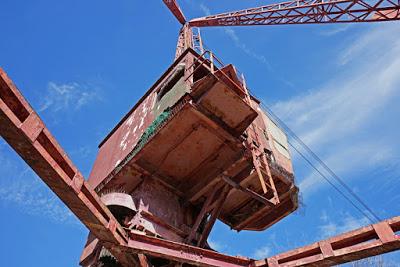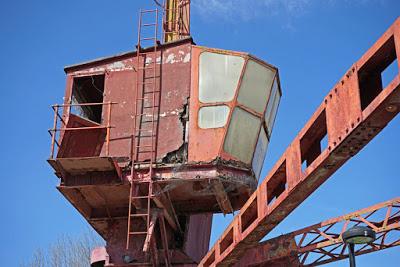
One such is Surrey Docks' last surviving crane, reaching out to the Thames with frozen arms, its cabin empty and gently decaying. It has been here since just after the Second World War, and operated until the 1980s.

It's a Scotch (or stiffleg) derrick: a type of crane with fixed legs holding its mast in place, while its jib can be moved. For this crane, the jib reached over to the river to load and unload barges of hardwoods.

While such cranes were once a common feature of the London docks, this is the last, lonely survivor. Its arm no longer lifts cargoes of timber, but frames the high and shiny buildings now occupying the former docklands. Commercial Dock pier, which used to extend into the river here, is gone; the working ships it served have been replaced by occasional pleasure boats and Thames Clippers.

Thanks to these transformations, the crane has gone from commonplace feature to local landmark. However, it may not be with us for much longer. The land has been sold to developers, and their planning application submitted last year involved its removal from the land. If that happens, we will lose a local landmark, a bit of character among the often-bland developments, and a physical piece of our past.

Although not everyone would agree. One commenter on the planning application sums up the alternative view: 'On the subject of the red crane I am an agnostic. I understand the arguments about local heritage; but I have always viewed it as a ungainly piece of junk.'
Further reading: there's a fuller history of this site at A Rotherhithe Blog.

